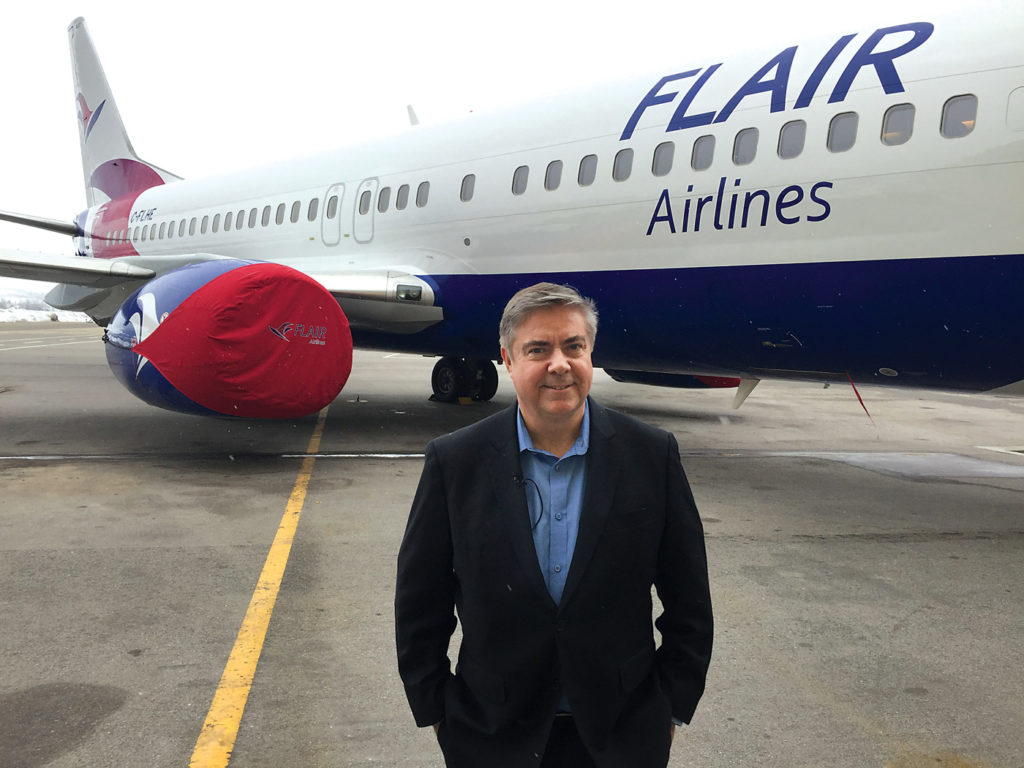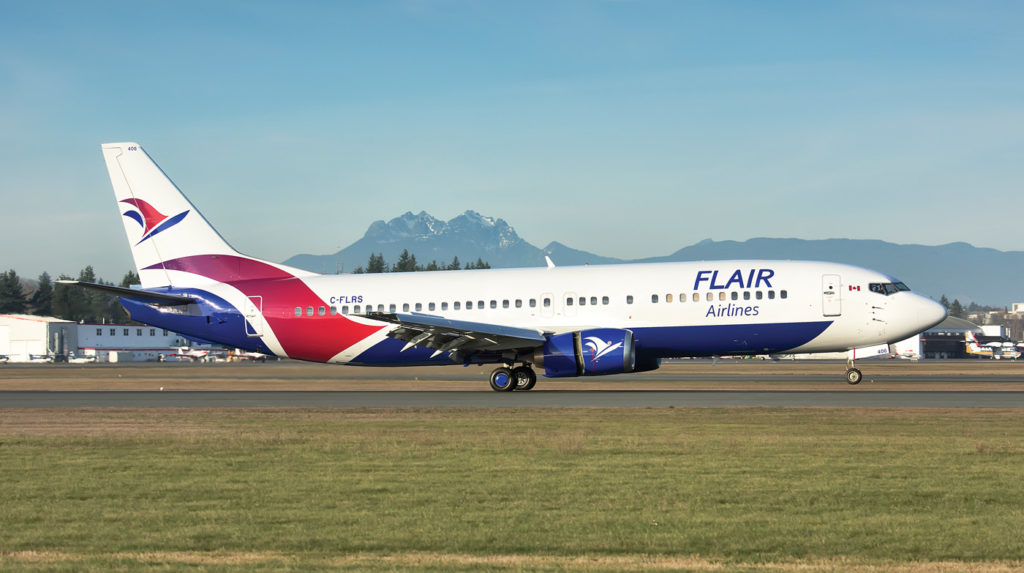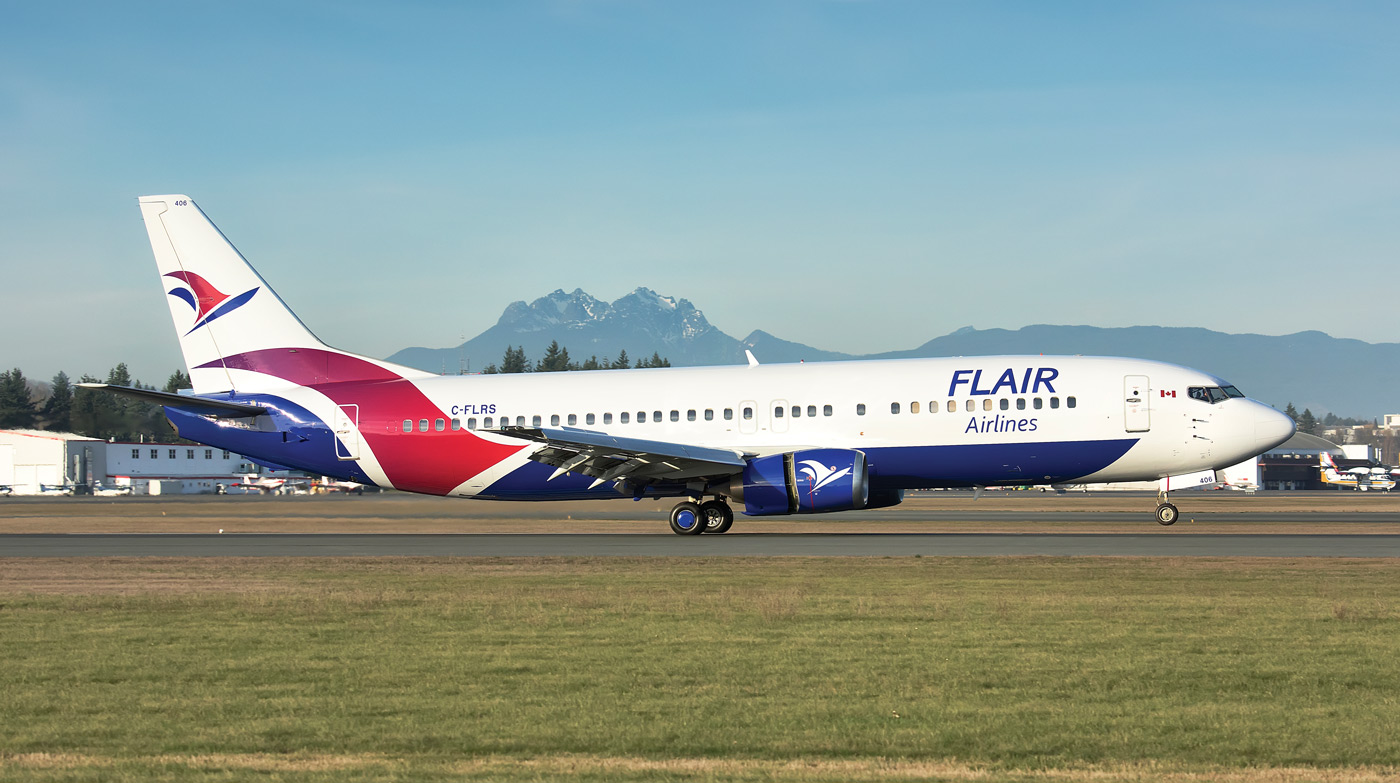Estimated reading time 5 minutes, 19 seconds.
Jim Scott makes no apologies for Flair Airlines Ltd.’s business strategy that deviates at times from what you might expect from an ultra-low-cost carrier (ULCC).

The rule of thumb for ULCCs is to operate at secondary airports, but Flair added Toronto Pearson International Airport and Vancouver International Airport to its network in mid-December of 2017.
“It’s easier to fill the airplanes going into the major centres,” said Scott, who took over as Flair’s chief executive officer in January 2018.
While Scott inherited Flair’s route map when he became CEO, he defends the decision to add Toronto and Vancouver to the company’s list of Canadian destinations.
“Even when we go higher up in our ticket price, as long as we’re lower than what’s already on the market, it works,” he said in an interview.
Flair’s other destinations are Edmonton, Winnipeg, Hamilton and two B.C. communities–Kelowna and Abbotsford.
Scott said consumers are seeking bargains in order to make it worth their time to drive from Toronto to Hamilton or from Vancouver to Abbotsford.
He said there are many factors that play into Flair’s decision-making process, acknowledging the higher landing fees in Toronto and Vancouver compared with landing charges at secondary airports.
Since Flair doesn’t fly non-stop between Vancouver and Toronto, the catch behind the discounted fare is that you need to board a connecting flight to arrive at your final destination.

“We’re adapting the ULCC strategy for Canada. Canada is unique. It doesn’t have that much population density,” said Scott, who is a former pilot. “Secondary markets are tough to fill in the off-peak seasons. In the summer, they’re great.”
Plans are underway to keep planes busy by moving some of Flair’s capacity in the winter schedule to incorporate scheduled flights into the United States and charters into Mexico, thereby reducing dependence on the Canadian market.
Flair’s fleet consists of seven Boeing 737-400s, with the goal of adding two Boeing 737-800s some time during the winter 2018-19 flying schedule. By the end of next year, the goal is to have a total of 13 planes in the fleet.
No decision has been made yet on an aircraft type in the long term, after Flair phases out the Boeing 737-400s.
Flair flew about 400,000 passengers in 2017 and forecasts that it will carry one million people this year and 1.5 million next year.
Flair’s predecessor, NewLeaf Travel Co. Inc., launched in July 2016 as a ticket reseller of flights operated by Flair, then a charter carrier. In June 2017, Kelowna-based Flair acquired NewLeaf and rebranded itself with a new livery and also transitioned to become a scheduled airline.
Jim Young, who worked in the first half of 2014 as president of Canada Jetlines Ltd., emerged in 2015 as NewLeaf CEO. He lost his job when Flair bought NewLeaf last summer. But Scott said Young has been retained as an adviser.
Scott is co-founder and a former executive at Jetlines. He served as Jetlines CEO from 2013 to May 2017. While Jetlines has yet to launch, Flair already employed 225 workers and had 50 contractors in early 2018.
Top Flair personnel include Chris Lapointe, vice-president of commercial operations, and Bill Hardy, vice-president of operations.
Jim Rogers, who co-founded Kelowna Flightcraft (now known as KF Aerospace), sold his shares in Flair in January 2018, to an investment group led by B.C. businessman Jerry Presley. Presley, who serves as Flair’s executive chairman, now leads a private group of investors that holds a majority stake.

Efforts to reduce the cost per available seat mile (CASM) and make efficiency gains are ongoing, including persuading more consumers to book directly on Flair’s website. Scott said he has noticed that millennials prefer to book their flights online.
Flair temporarily dropped its $30 fee for carry-on bags in December. The carrier is back to charging the fee, but gives consumers the option to choose from unbundled or bundled fares. “You can buy the unbundled, bare-bones ticket, and add more things. The bundled service is cheaper than adding everything together,” he said.
One of the so-called frills that costs more money is extra legroom. Forty-six of the Flair Boeing 737-400’s 156 seats have extra legroom (the first five rows, plus the two rows with the emergency exits).
Robert Kokonis, president of airline consulting firm AirTrav Inc., said it will be challenging for Flair to ensure its total revenue per available seat mile, including fees for roomier seats, will be higher than its overall CASM, given the relatively low seat density of Flair’s aircraft. Keeping CASM ultra-low is critical for ULCC success. WestJet’s Swoop entrant, by comparison, will offer 189 seats on its Boeing 737-800 aircraft.
Scott acknowledges the competition posed by Swoop in the ULCC space, but emphasizes that he isn’t losing any sleep over what Jetlines or other prospective rivals might be doing, such as FlyToo.
“We can only really react to those who are publishing schedules and have inventory in the market,” he said, adding that on some routes, Flair’s jet service has the advantage over rivals operating turboprops.
“We’re customer focused. If there are competing flights at the same price point, we want people to fly us. We want to be the better brand,” said Scott. “Whenever we go into a market, we stimulate the market. We want to win the hearts and minds of consumers with service and
not just price.”


For a low cost carrier to paint those planes with that silly complicated paint job is rediculous. They should be all white with a colored tail like Westjet did to keep costs down. When a deal comes along for a white tail it’s easier to get it branded and on line. Low cost my ass.
Terrible LoOking Livery ….fire the fool who designed it …. ugh ugh ugh
The ULCCs do not have IROP plans in place. When they have irregular operations, such as delays, diversions, and cancellations, their passengers get stranded for hours as they don’t have alternative solutions to help their passengers! Like hotel accommodation, meals, snacks, transportation as per IATA regulations.